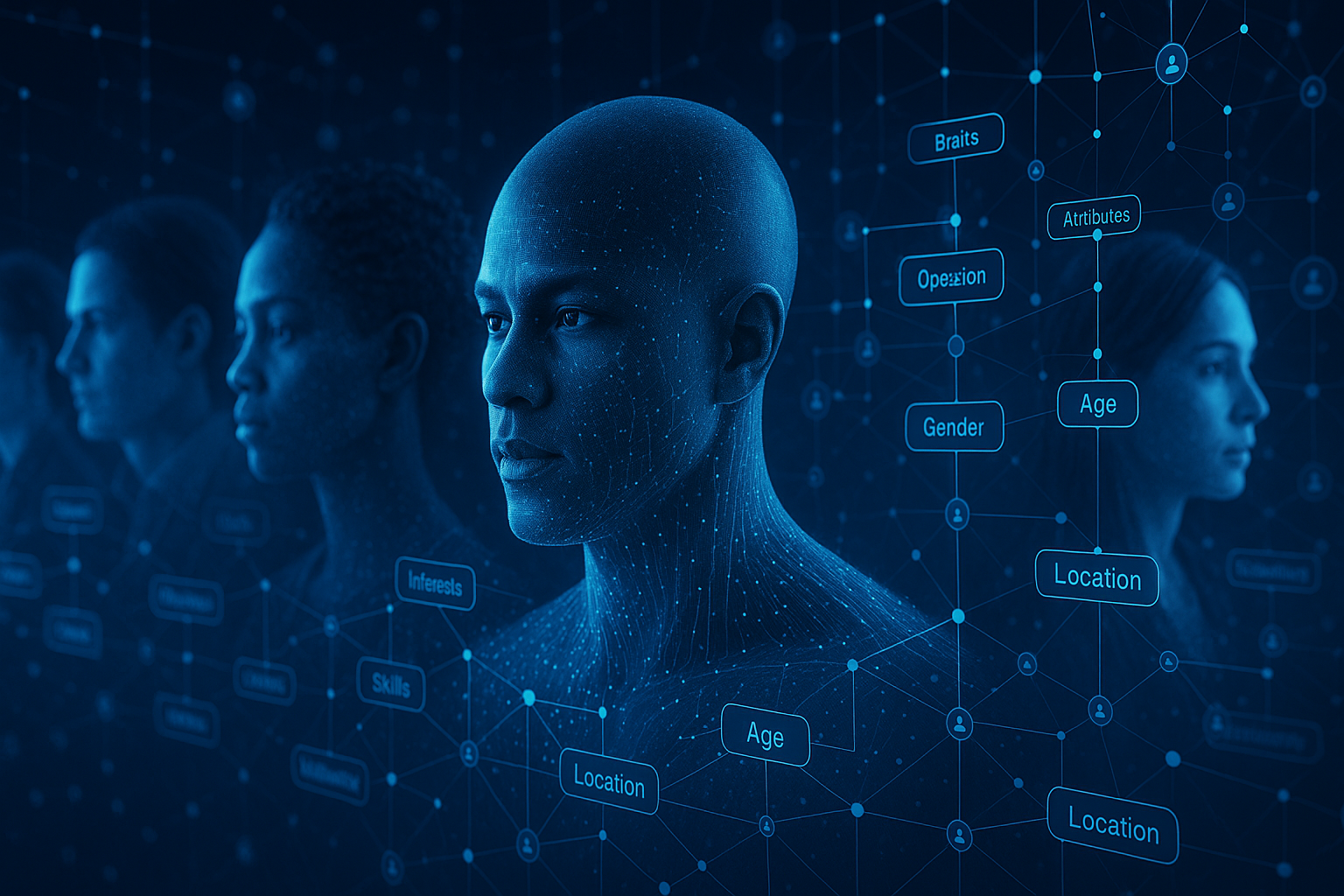Artificial intelligence has long struggled with a fundamental problem: it treats everyone the same. While modern AI can write code, analyze data, and answer questions, it often feels impersonal—like talking to a generic chatbot rather than an assistant that truly understands you. DEEPPERSONA changes this by creating incredibly detailed, lifelike digital identities that help AI systems understand and interact with the complexity of real human beings.
Why AI Needs Deep Personas
Think of the difference between a form that asks for your name and age versus one that knows your career trajectory, hobbies, communication style, and life experiences. The first is functional but shallow. The second can actually be helpful in meaningful ways.
Until now, most AI systems relied on “synthetic personas”—simplified digital profiles used for training and personalization. But these profiles were shallow, often stereotypical, and lacked the richness of real people. Even powerful modern AI models, when asked to create fictional people, tend to produce overly optimistic, inconsistent characters that feel like cardboard cutouts.
DEEPPERSONA solves this by building personas with the depth and coherence of actual human beings, transforming AI from a generic tool into something that feels genuinely personalized.
The Old Way vs. The DEEPPERSONA Approach
| Feature | Traditional Synthetic Personas | DEEPPERSONA |
|---|---|---|
| Depth | Based on a few simple traits (e.g., “likes coffee”) | Built from 8,000+ interconnected attributes |
| Diversity | Often stereotypical or overly optimistic | Reflects complex, nuanced diversity of real people |
| Realism | Generic and inconsistent | Maintains internal consistency and coherent life story |
| Generation | Random or template-based | Progressive, narrative-driven construction |
How DEEPPERSONA Creates Digital Humans
DEEPPERSONA uses a two-stage process that systematically builds rich, believable personas:
Stage 1: Building the “Blueprint of Humanity”
The system starts with a massive taxonomy—essentially a hierarchical map of human traits. This isn’t a simple list; it’s a structured tree where broad categories like “Hobbies and Interests” branch into specifics like “Cuisine Preferences” and continue down to individual affinities.
To create this blueprint, DEEPPERSONA analyzed tens of thousands of real, anonymous conversations between humans and ChatGPT. By studying how people naturally share information about themselves, it extracted and organized over 8,000 hierarchically-organized human attributes—the largest human-attribute taxonomy ever created.
Stage 2: Progressive Persona Generation
Once the blueprint exists, DEEPPERSONA crafts unique individuals through a methodical process:
Start with Core Anchors: The system establishes stable foundation attributes—age, career, location—that ground the persona in reality.
Intelligent Attribute Selection: It progressively selects additional attributes from the taxonomy, ensuring each new trait logically connects with existing ones. This prevents the random, contradictory profiles that simpler systems create.
Narrative Completion: A Large Language Model fills in the specific details, stories, and experiences for each attribute, transforming a structured list into a rich, narrative-complete life story.
This progressive approach ensures every persona feels like a real, integrated person rather than a collection of random facts.
Three Pillars of Ultra-Realistic Personas
1. Unprecedented Depth
With 8,000+ available attributes, DEEPPERSONA generates profiles containing hundreds of interconnected traits. This level of detail was previously impossible to achieve at scale.
2. Diversity by Design
The system actively fights against stereotypes in two ways:
-
Balanced Attribute Diversification: It samples traits from both closely-related and distant categories, creating surprising but realistic combinations—just like real people who defy simple categorization.
-
Statistical Grounding: For demographics like age, gender, and location, it uses real-world statistical data instead of AI-generated assumptions, preventing the biases embedded in training data.
3. Coherent Storytelling
The progressive generation method ensures every new attribute builds on previous ones, creating internally consistent life stories without contradictions or logical gaps.
Real-World Performance Improvements
The true test of DEEPPERSONA is how much it improves AI performance. When AI systems use these deep personas, the results are significant:
Personalization Accuracy: AI responses became 11.6% more accurate when personalized using DEEPPERSONA profiles. Users receive more relevant, tailored answers that genuinely reflect their unique context.
Social Simulation Realism: In social science simulations, AI agents with DEEPPERSONA profiles behaved much more like real people, reducing the gap between AI and human responses on social surveys by 31.7%. This allows researchers to simulate how diverse populations might think and respond to different scenarios with unprecedented accuracy.
Personality Modeling Precision: DEEPPERSONA captured personality nuances with high fidelity, reducing deviation from real human data on the scientifically-validated Big Five personality test by 17%.
Privacy Without Compromise
One of DEEPPERSONA’s key advantages is that it provides rich, realistic personas without using any sensitive user data. By generating synthetic identities from patterns learned from anonymous conversations, it offers a “privacy-free platform” for building personalized AI systems.
This means developers can create human-aligned AI without the ethical concerns and data protection challenges of using real user information.
What This Means for AI’s Future
DEEPPERSONA represents a fundamental shift in how AI systems understand and interact with human diversity. Instead of treating everyone as the same generic user, AI can now reference deep, coherent personas that capture the complexity of real human identities.
This isn’t just about creating interesting fictional characters. It’s about making AI that genuinely serves the rich, complex tapestry of human identity—moving from pattern-mimicking to authentic understanding. As AI becomes more integrated into daily life, systems like DEEPPERSONA will be essential for creating experiences that feel less like talking to a machine and more like interacting with something that truly gets you.
Note: This article is based on research documentation about the DEEPPERSONA system. As this appears to be academic research, specific publication sources and research paper links should be added once publicly available.
Source: Official Link
